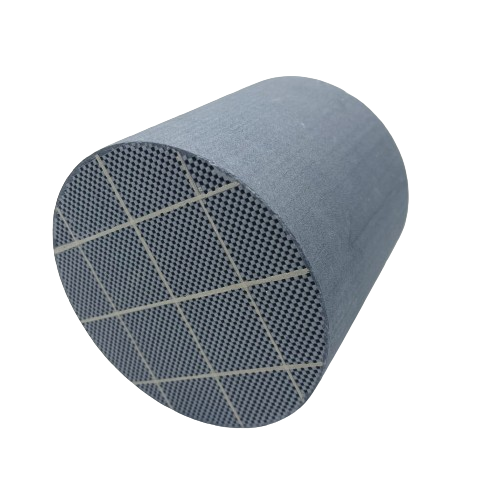Introduction
Catalytic converters are an essential component in modern vehicles, playing a critical role in reducing harmful emissions and protecting the environment. Despite their importance, many drivers know little about how these devices work or why they are so crucial. In this comprehensive guide, we’ll delve into the fascinating world of catalytic converters, exploring their function, components, and impact. Whether you’re a car enthusiast or just curious about automotive technology, this blog will provide you with a thorough understanding of catalytic converters.
What is a Catalytic Converter?
Definition and Purpose
A catalytic converter is an emissions control device that transforms harmful pollutants in exhaust gas from an internal combustion engine into less harmful substances. It is designed to reduce the amount of nitrogen oxides (NOx), carbon monoxide (CO), and hydrocarbons (HC) emitted into the atmosphere.
Historical Background
Catalytic converters were introduced in the mid-1970s in response to stricter environmental regulations. Their development was driven by the need to address the growing problem of air pollution caused by automobile exhaust.
Components of a Catalytic Converter
A catalytic converter typically consists of the following components:
- Catalytic Substrate: The core of the converter, usually made of ceramic or metallic material, coated with precious metals like platinum, palladium, and rhodium.
- Washcoat: A layer that increases the surface area for the catalytic reactions to occur.
- Housing: The outer shell, usually made of stainless steel, that encases the substrate and protects it from physical damage.
How Does a Catalytic Converter Work?
The Science Behind the Conversion Process
Catalytic converters rely on chemical reactions to convert harmful gases into less harmful ones. These reactions occur on the surface of the catalyst, which is coated with precious metals. The process involves two main types of reactions: reduction and oxidation.
Reduction Reaction
In the reduction reaction, nitrogen oxides (NOx) are broken down into nitrogen (N2) and oxygen (O2). This reaction occurs when the exhaust gases pass over the catalyst, causing the nitrogen oxides to release their oxygen atoms.
Oxidation Reaction
The oxidation reaction involves the conversion of carbon monoxide (CO) and hydrocarbons (HC) into carbon dioxide (CO2) and water (H2O). This is achieved by adding oxygen atoms to these harmful gases.
Three-Way Catalysts
Modern catalytic converters are typically three-way catalysts, meaning they perform three simultaneous tasks:
- Reduction of NOx to N2 and O2
- Oxidation of CO to CO2
- Oxidation of HC to CO2 and H2O
Table: Chemical Reactions in a Catalytic Converter
| Pollutant | Conversion Reaction | Byproducts |
|---|---|---|
| Nitrogen Oxides (NOx) | NOx → N2 + O2 | Nitrogen (N2), Oxygen (O2) |
| Carbon Monoxide (CO) | CO + O2 → CO2 | Carbon Dioxide (CO2) |
| Hydrocarbons (HC) | HC + O2 → CO2 + H2O | Carbon Dioxide (CO2), Water (H2O) |
The Importance of Catalytic Converters
Environmental Impact
Catalytic converters play a vital role in reducing air pollution. By converting harmful gases into less harmful byproducts, they help decrease smog formation, acid rain, and respiratory health issues caused by poor air quality.
Regulatory Compliance
Strict emissions regulations in many countries mandate the use of catalytic converters in vehicles. Compliance with these regulations is essential for vehicle manufacturers and owners to avoid fines and contribute to environmental protection.
Vehicle Performance
While the primary purpose of a catalytic converter is to reduce emissions, it also affects vehicle performance. A well-functioning catalytic converter helps maintain optimal engine efficiency and performance by ensuring proper exhaust flow.
Common Issues with Catalytic Converters
Clogging
A common problem with catalytic converters is clogging, which occurs when the substrate becomes coated with unburned fuel or oil. This can restrict exhaust flow and reduce engine performance.
Overheating
Overheating can damage the catalyst and reduce its effectiveness. This is often caused by an imbalance in the air-fuel mixture, leading to excessive heat in the exhaust system.
Contamination
Contaminants such as lead, sulfur, and silicone can poison the catalyst, rendering the catalytic converter ineffective. Using high-quality fuel and engine oil can help prevent contamination.
Physical Damage
Physical damage, such as cracks or dents, can compromise the integrity of the catalytic converter. This can occur due to road debris or improper installation.
Maintaining Your Catalytic Converter
Regular Inspection
Regular inspections can help identify issues with your catalytic converter before they become serious problems. Check for signs of wear, damage, or unusual exhaust smells.
Proper Maintenance
Maintaining your vehicle’s engine and exhaust system is crucial for the longevity of your catalytic converter. This includes regular oil changes, using high-quality fuel, and ensuring the fuel mixture is properly balanced.
Addressing Engine Issues Promptly
Addressing engine issues such as misfires, oil leaks, and fuel system problems promptly can prevent damage to your catalytic converter. An engine running poorly can produce excess pollutants that overwhelm the converter.
When to Replace Your Catalytic Converter
Signs of a Failing Catalytic Converter
- Decreased Engine Performance: Noticeable loss of power and acceleration.
- Increased Emissions: Higher levels of pollutants detected during emissions testing.
- Unusual Noises: Rattling or hissing sounds from the exhaust.
- Check Engine Light: Illumination of the check engine light with codes related to the catalytic converter.
Replacement Process
Replacing a catalytic converter involves removing the old unit and installing a new one. This task is typically performed by a professional mechanic due to the complexity and need for proper installation.
Conclusion
Catalytic converters are a marvel of modern automotive technology, playing a crucial role in reducing harmful emissions and protecting our environment. Understanding how they work, their importance, and how to maintain them can help you ensure your vehicle runs efficiently and stays compliant with emissions regulations. Regular maintenance and prompt attention to any issues can extend the life of your catalytic converter and contribute to a cleaner, healthier world.

